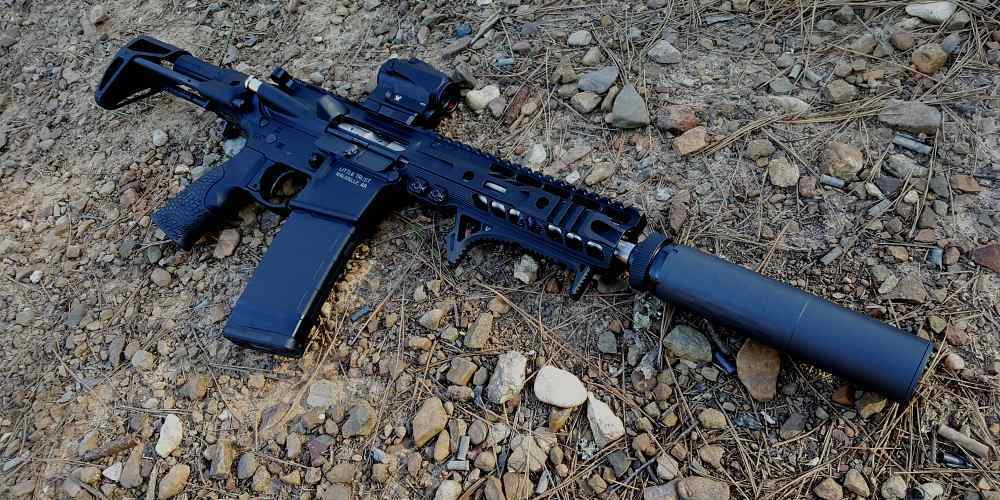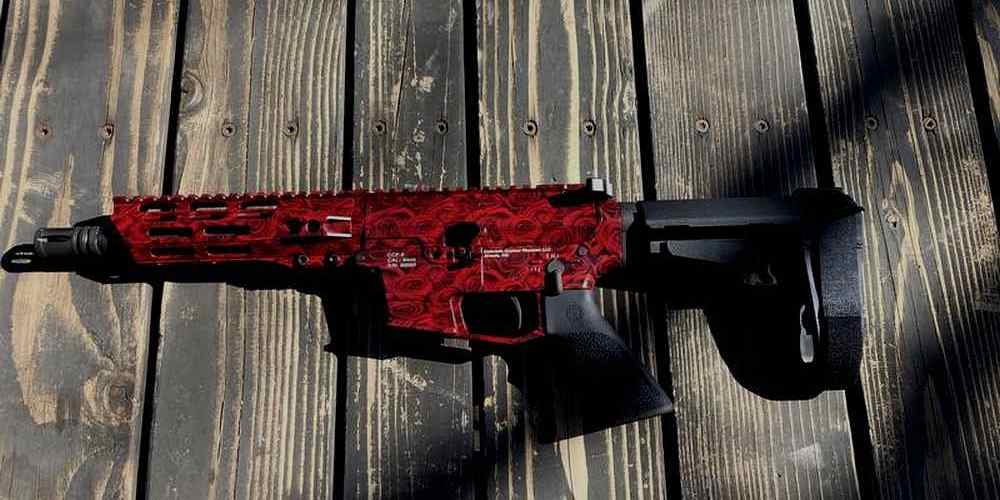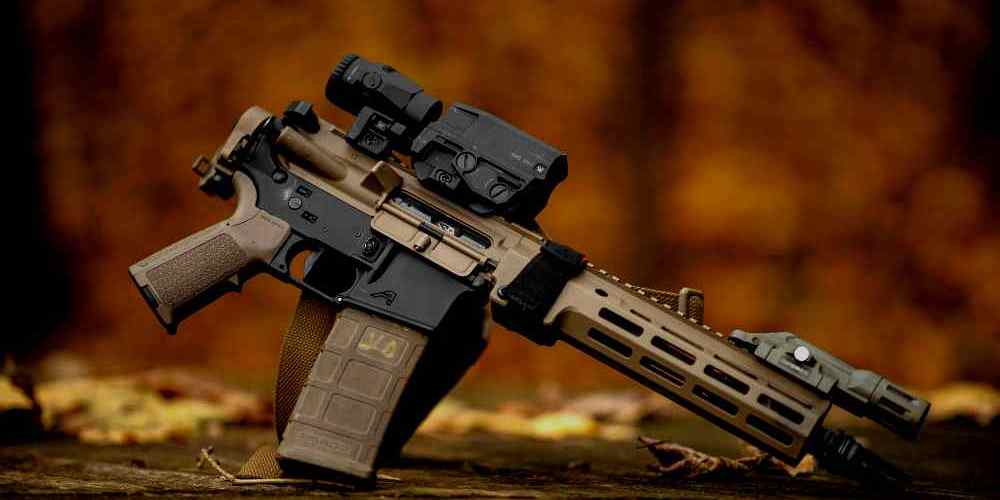“Crafted with precision, built to perfection.”
Understanding the Importance of Tight Tolerances in AR15 Builds
When it comes to building an AR15, precision is key. Every component must fit together seamlessly to ensure optimal performance and reliability. This is where understanding tolerances and fitment becomes crucial for the precision builder.
Tolerances refer to the allowable deviation from a specified dimension. In the world of firearms, tight tolerances are essential for ensuring consistent accuracy and reliability. When components have loose tolerances, there is more room for error, which can lead to malfunctions and decreased performance.
One of the most critical areas where tight tolerances are essential in an AR15 build is the upper and lower receiver fitment. The upper and lower receivers must fit together snugly to prevent any movement between the two components. This ensures that the rifle maintains its zero and accuracy over time.
To achieve a tight fit between the upper and lower receivers, precision builders often opt for matched receiver sets. These sets are manufactured together and are designed to fit together perfectly. This eliminates any potential play between the receivers and ensures a solid foundation for the rest of the build.
Another area where tight tolerances are crucial is in the barrel and barrel extension fitment. The barrel extension is the part of the barrel that locks into the upper receiver, and it must fit precisely to ensure proper headspacing. Headspacing is the distance between the face of the bolt and the base of the cartridge case when the round is fully chambered. Proper headspacing is critical for reliable and safe operation of the firearm.
When building an AR15, precision builders pay close attention to the fitment of the barrel and barrel extension to ensure proper headspacing. This often involves using precision tools to measure and adjust the fitment as needed. By achieving a tight fit between the barrel and barrel extension, precision builders can ensure consistent accuracy and reliability.
In addition to the upper and lower receiver fitment and barrel fitment, tight tolerances are also important in other areas of the AR15 build, such as the trigger group and bolt carrier group. The trigger group must fit precisely within the lower receiver to ensure smooth and consistent trigger pull. Similarly, the bolt carrier group must fit snugly within the upper receiver to ensure reliable cycling of the firearm.
Overall, understanding the importance of tight tolerances in AR15 builds is essential for precision builders. By paying close attention to fitment and tolerances throughout the build process, precision builders can ensure optimal performance and reliability of their firearms. Whether it’s achieving a tight fit between the upper and lower receivers or ensuring proper headspacing between the barrel and barrel extension, precision builders know that every detail matters when it comes to building a high-quality AR15.

Tips for Achieving Perfect Fitment in Your AR15 Build
When it comes to building an AR15, precision is key. Every component must fit together perfectly to ensure optimal performance and reliability. Achieving perfect fitment requires attention to detail and an understanding of the tolerances involved in the build process.
One of the first things to consider when building an AR15 is the tolerances of the various components. Tolerances refer to the allowable deviation from a specified dimension. In the world of firearms, tight tolerances are essential for accuracy and reliability. Understanding the tolerances of each component will help you ensure that everything fits together seamlessly.
When selecting components for your AR15 build, it’s important to choose parts from reputable manufacturers known for their precision machining. High-quality components will have tighter tolerances, making it easier to achieve perfect fitment. Cheaper, lower-quality parts may have looser tolerances, leading to issues with fitment and performance.
As you begin assembling your AR15, pay close attention to how each component fits together. Use a set of calipers to measure the dimensions of each part and compare them to the manufacturer’s specifications. This will help you identify any components that may be out of spec and need to be replaced.
When installing components, take your time and make sure everything is aligned properly. Use a vise block or upper receiver block to securely hold the upper receiver in place while installing the barrel, gas block, and handguard. This will help prevent any misalignment that could affect the fitment of the components.
When installing the lower receiver components, such as the trigger assembly and buffer tube, make sure everything is properly aligned and seated. Use a punch set to drive in roll pins and other small components, being careful not to damage the finish of the receiver. Proper installation is key to achieving perfect fitment and ensuring the reliability of your AR15.
Once your AR15 is fully assembled, it’s important to test fire it to ensure everything is functioning properly. Pay attention to how the rifle cycles and how the components interact with each other. If you notice any issues with fitment or performance, take the time to diagnose and correct the problem before using the rifle.
In conclusion, achieving perfect fitment in your AR15 build requires attention to detail and an understanding of tolerances. By selecting high-quality components, measuring dimensions accurately, and taking your time during assembly, you can ensure that everything fits together perfectly. Remember to test fire your rifle and make any necessary adjustments to achieve optimal performance and reliability. With the precision builder’s approach to AR15 tolerances and fitment, you can build a rifle that is both accurate and reliable.
Common Tolerance Issues to Watch Out for in AR15 Builds
When it comes to building an AR15, precision is key. Every part must fit together perfectly to ensure the rifle functions properly and reliably. One of the most important aspects of building an AR15 is understanding tolerances and fitment. Tolerances refer to the allowable deviation from a specified dimension, while fitment refers to how well parts fit together.
One common tolerance issue to watch out for in AR15 builds is the fit between the upper and lower receivers. The fit between these two components is crucial for the overall function of the rifle. If the fit is too loose, it can cause accuracy issues and affect the overall performance of the rifle. On the other hand, if the fit is too tight, it can make it difficult to assemble and disassemble the rifle.
To ensure a proper fit between the upper and lower receivers, it is important to pay attention to the tolerances of both components. Some manufacturers may have tighter or looser tolerances than others, so it is important to do your research and choose components that are compatible with each other. Additionally, some aftermarket parts may require fitting or modification to ensure a proper fit.
Another common tolerance issue to watch out for in AR15 builds is the fit between the barrel and the barrel extension. The barrel extension is a critical component that connects the barrel to the upper receiver and houses the locking lugs that lock the bolt into battery. If the fit between the barrel and the barrel extension is not precise, it can cause accuracy issues and affect the overall performance of the rifle.
To ensure a proper fit between the barrel and the barrel extension, it is important to choose components that are manufactured to tight tolerances. Additionally, it is important to properly torque the barrel nut to ensure a secure fit between the barrel and the barrel extension. Some builders may choose to use a barrel vise and action block to ensure a precise fit between these components.
One final common tolerance issue to watch out for in AR15 builds is the fit between the bolt carrier group and the upper receiver. The bolt carrier group is a critical component that houses the bolt and firing pin and is responsible for cycling the rifle. If the fit between the bolt carrier group and the upper receiver is not precise, it can cause reliability issues and affect the overall function of the rifle.
To ensure a proper fit between the bolt carrier group and the upper receiver, it is important to choose components that are manufactured to tight tolerances. Additionally, it is important to properly lubricate the bolt carrier group to ensure smooth operation. Some builders may choose to use a go/no-go gauge to check the headspace of the rifle to ensure a proper fit between these components.
In conclusion, understanding tolerances and fitment is crucial when building an AR15. By paying attention to these common tolerance issues and taking the necessary steps to ensure a precise fit between components, builders can create a reliable and accurate rifle. Remember, precision is key when it comes to building an AR15.
The Precision Builder’s Guide to Selecting High-Quality Parts for Your AR15
When it comes to building a precision AR15, attention to detail is key. Every component must be carefully selected to ensure proper fitment and optimal performance. One of the most important factors to consider when building an AR15 is tolerances. Tolerances refer to the allowable deviation from a specified dimension, and they play a crucial role in determining how well the various parts of your rifle will fit together.
In the world of precision shooting, tight tolerances are essential. A rifle with loose tolerances will not only be less accurate but also less reliable. Parts that are too loose can cause malfunctions and affect the overall performance of your rifle. On the other hand, parts that are too tight can be difficult to assemble and may not function properly.
When selecting parts for your AR15, it’s important to pay close attention to the tolerances of each component. High-quality manufacturers will provide detailed specifications for their parts, including information on tolerances. By choosing parts with tight tolerances, you can ensure a precise fit and optimal performance.
In addition to tolerances, fitment is another important consideration when building a precision AR15. Fitment refers to how well the various parts of your rifle fit together. A rifle with good fitment will have minimal play between components, resulting in a more stable and accurate platform.
To achieve optimal fitment, it’s important to select parts that are compatible with each other. This means choosing components from reputable manufacturers that adhere to industry standards. It’s also a good idea to test fit each part before final assembly to ensure a proper fit.
When building a precision AR15, it’s important to take a systematic approach to selecting parts. Start by researching reputable manufacturers and reading reviews from other builders. Look for parts that are known for their tight tolerances and good fitment.
Once you’ve selected your parts, pay close attention to the assembly process. Take your time and follow the manufacturer’s instructions carefully. Use the proper tools and techniques to ensure a precise fit.
As you assemble your rifle, pay attention to how each part fits together. Look for any signs of play or misalignment, as these can indicate a problem with fitment. If you encounter any issues, don’t hesitate to reach out to the manufacturer for assistance.
By taking a meticulous approach to tolerances and fitment, you can build a precision AR15 that is both accurate and reliable. Remember that precision shooting is a game of inches, and even the smallest deviation can have a big impact on your rifle’s performance.
In conclusion, building a precision AR15 requires careful attention to tolerances and fitment. By selecting high-quality parts with tight tolerances and good fitment, you can ensure a precise and reliable rifle. Take your time during the assembly process and don’t hesitate to seek help if needed. With the right approach, you can build a rifle that will perform flawlessly on the range or in competition.
How to Fine-Tune Tolerances for Optimal Performance in Your AR15 Build
When it comes to building an AR15, precision is key. Every component must fit together perfectly to ensure optimal performance. One of the most important aspects of building an AR15 is understanding tolerances and fitment. In this article, we will discuss the precision builder’s approach to AR15 tolerances and fitment, and how you can fine-tune these aspects to achieve the best possible results.
Tolerances refer to the allowable deviation from a specified dimension. In the world of firearms, tight tolerances are essential for accuracy and reliability. When building an AR15, it is important to pay close attention to the tolerances of each component to ensure that they fit together properly. This means measuring each part carefully and making any necessary adjustments to achieve the desired fit.
One of the first steps in fine-tuning tolerances in your AR15 build is to carefully select high-quality components. Cheaper, lower-quality parts may have looser tolerances, which can lead to issues with fitment and performance. By investing in well-made components from reputable manufacturers, you can ensure that your AR15 build will be more precise and reliable.
Once you have selected your components, it is important to test fit each part before final assembly. This will allow you to identify any areas where adjustments may be needed to achieve the desired fit. For example, if a pin is too tight or a rail is slightly misaligned, you may need to file or sand down the offending part to achieve the proper fit.
In some cases, you may need to use shims or spacers to fine-tune tolerances in your AR15 build. These small, precision-made components can help you achieve the perfect fit between parts that may have slightly different dimensions. By using shims or spacers strategically, you can ensure that your AR15 build is as precise and reliable as possible.
Another important aspect of achieving optimal fitment in your AR15 build is proper lubrication. Applying a high-quality lubricant to moving parts can help reduce friction and wear, ensuring smooth operation and longevity. Be sure to follow the manufacturer’s recommendations for lubrication, and reapply as needed to keep your AR15 running smoothly.
In addition to fine-tuning tolerances and fitment, it is also important to consider the overall design and layout of your AR15 build. By carefully planning the placement of components and accessories, you can ensure that everything fits together seamlessly and functions as intended. This may involve making adjustments to the length of the buffer tube, the position of the handguard, or the alignment of the sights.
In conclusion, achieving optimal tolerances and fitment in your AR15 build requires careful attention to detail and a commitment to precision. By selecting high-quality components, testing fitment before final assembly, using shims or spacers as needed, lubricating moving parts, and planning the layout of your build carefully, you can ensure that your AR15 is as precise and reliable as possible. With the precision builder’s approach to AR15 tolerances and fitment, you can create a firearm that is not only accurate and reliable but also a joy to shoot.





